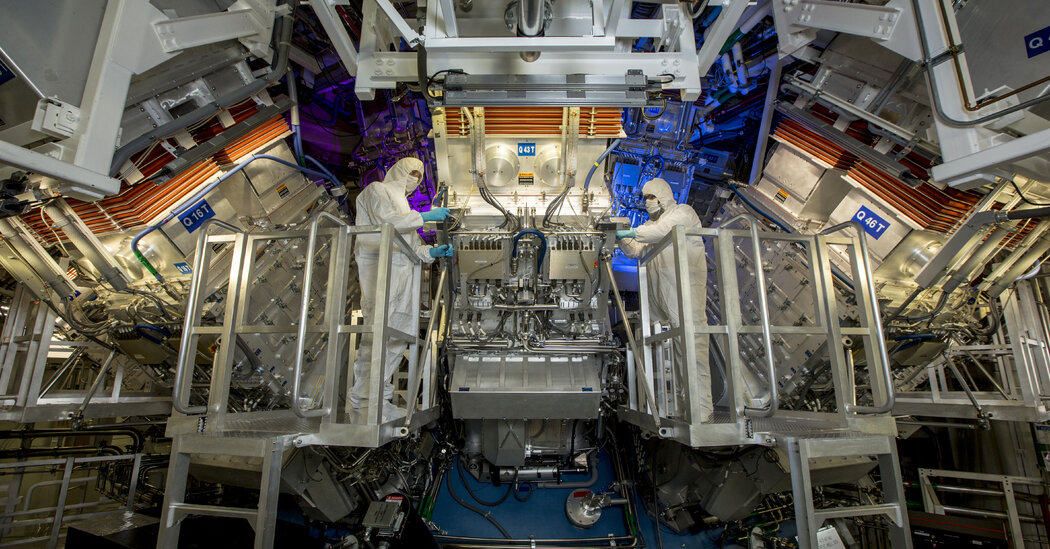Is the dream of fusion finally here?
For the past few days, scientists who study fusion – the reaction that powers the sun – have been e-mailing each other about an important milestone in their field.
The discussion gained momentum on Sunday when The Financial Times published an article saying that scientists at Lawrence Livermore National Laboratory in California had achieved ignition, a state in which more energy was produced in an experiment than laser beams had put into it.
Then on Monday, the federal Energy Department announced it would present a “major scientific breakthrough” made in the lab.
Here’s what you need to know about fusion power and Tuesday’s announcement.
When is the announcement and how can I view it?
Tuesday at 10 a.m. Eastern Time, Jennifer Granholm, the Secretary of Energy and other federal officials will make an announcement in Washington, DC. You can view it on the Energy Department’s website or in the video player embedded above.
What is Fusion?
Fusion is the thermonuclear reaction that illuminates the sun and other stars – the fusing of hydrogen atoms to form helium. The mass of helium is slightly less than the original hydrogen atoms. So, through Einstein’s iconic E=mc² equation, that difference in mass is converted into a burst of energy.
Where was the experiment conducted?
It took place at the Lawrence Livermore National Laboratory, which plays a key role in the development and maintenance of the US nuclear arsenal. One of the many initiatives is the National Ignition Facility or NIF.
Built at a cost of $3.5 billion, the main purpose of NIF is to conduct experiments that help the United States maintain its nuclear weapons without nuclear test explosions. Proponents said it could also advance fusion research, potentially leading to viable commercial power plants.
Last year, scientists from Livermore reported a big jump, a burst of energy — 10 quadrillion watts of power — that was 70 percent as much as the energy of laser light hitting the hydrogen target.
But the burst – essentially a miniature hydrogen bomb – lasted only 100 trillionths of a second.
What are the possibilities of fusion energy?
Fusion that can be produced on Earth in a controlled manner could mean an energy source that does not produce greenhouse gases, such as coal and oil, or hazardous, long-lived radioactive waste, as today’s nuclear power plants do.
But the laser experiments at NIF are still nowhere near practical enough to produce electricity like a commercial power plant does.
Nevertheless, successful experiments could point the way to the development of technologies usable outside of a laboratory setting.

